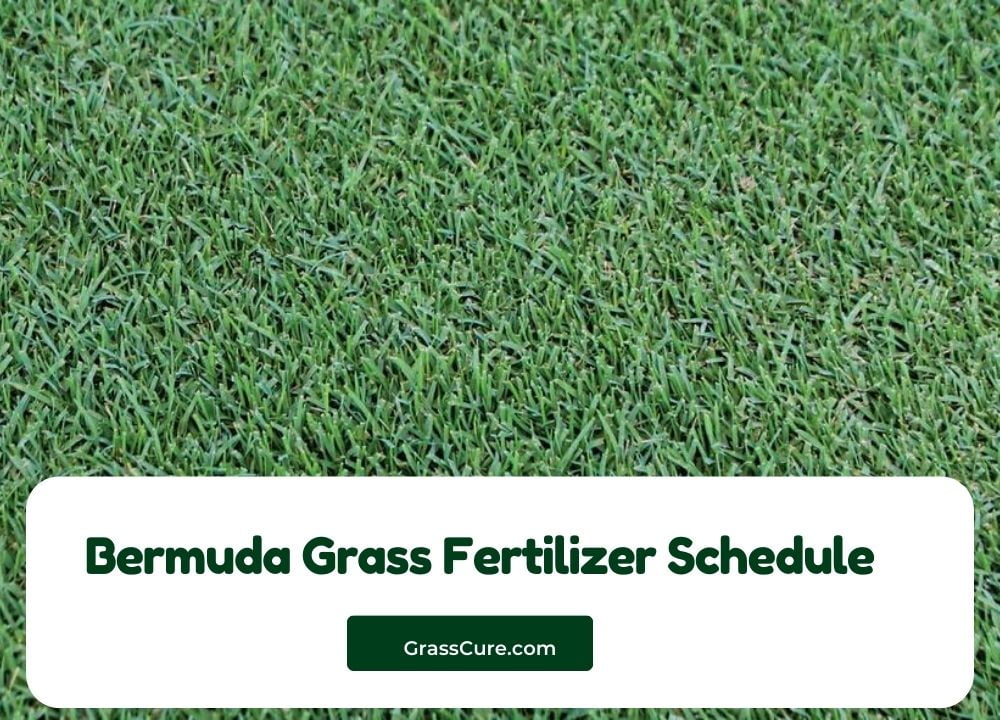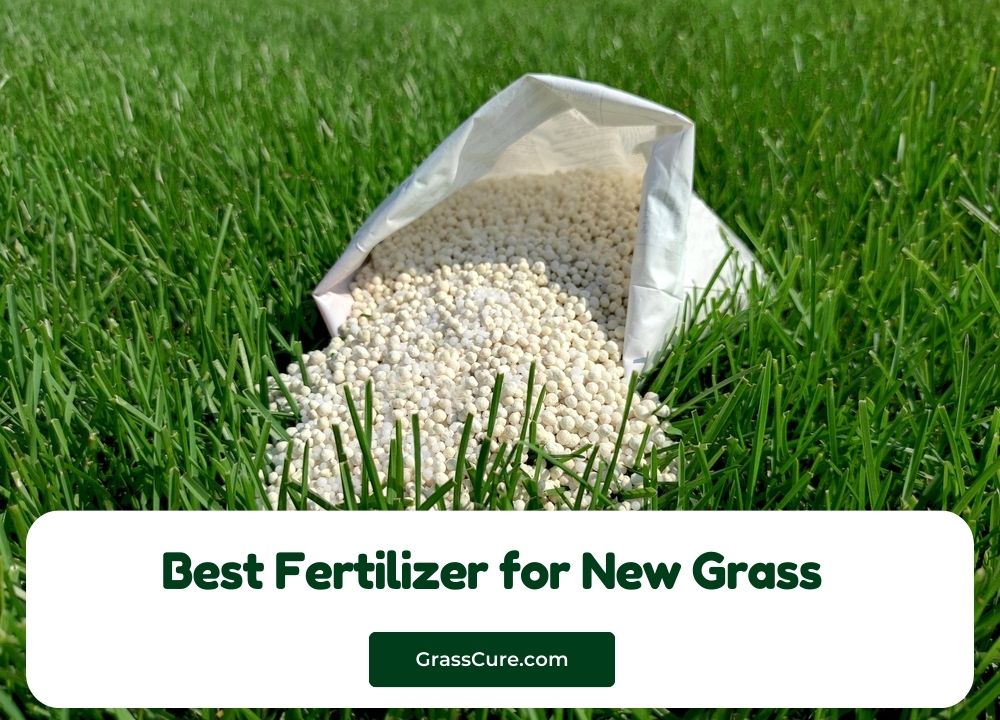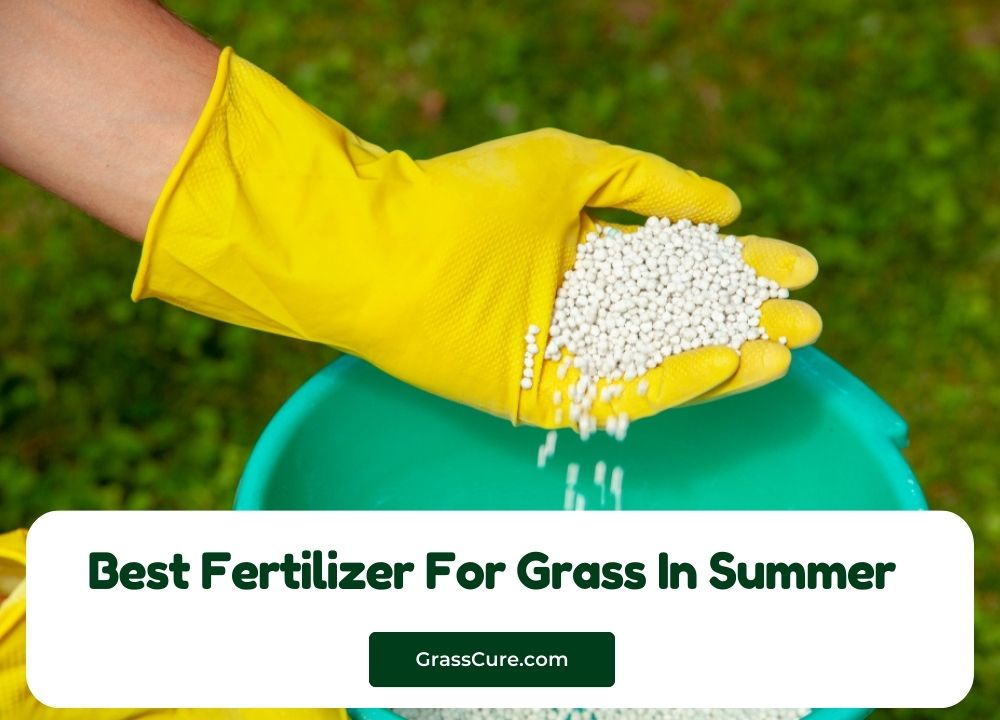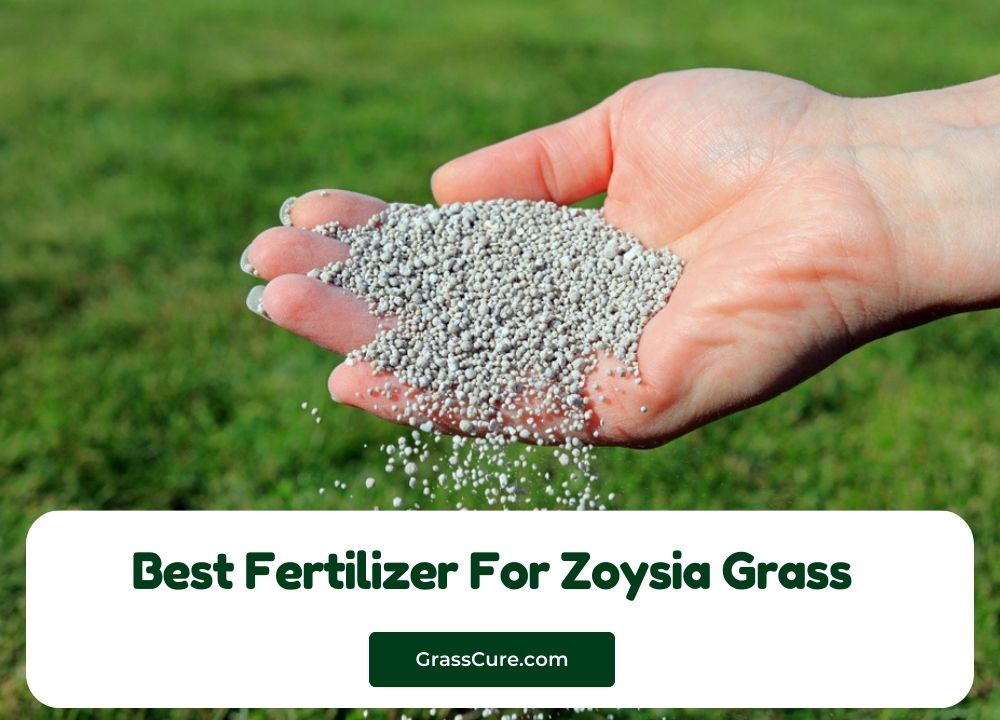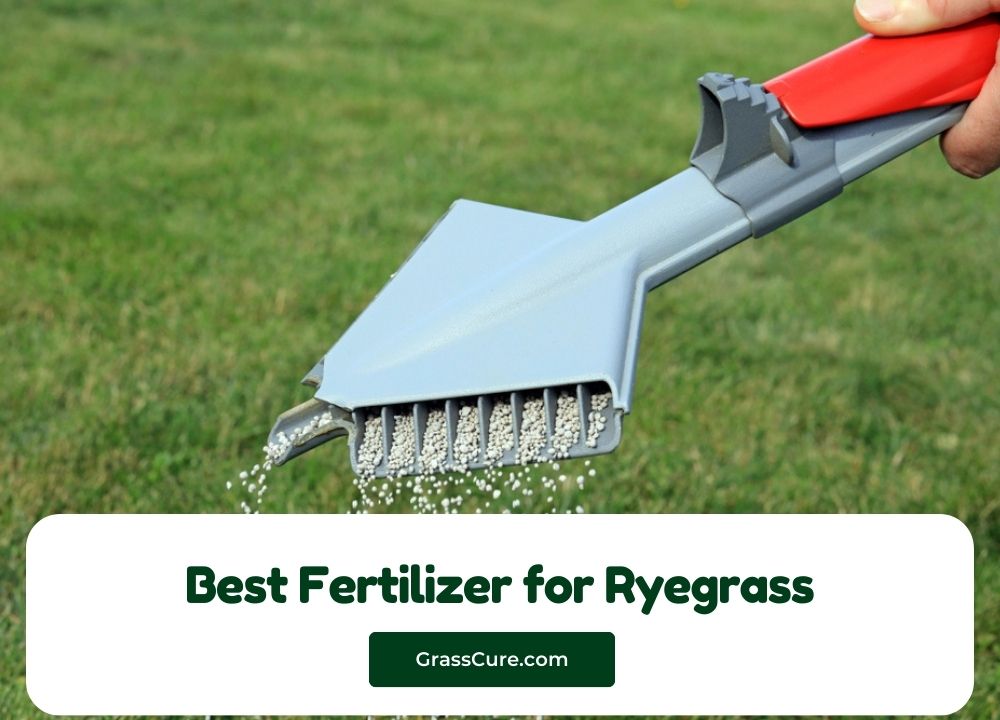The secret to maintaining its rich green color and robust growth lies in a well-planned fertilization schedule. Proper fertilization not only nourishes the grass but also enhances its drought resistance and ability to withstand foot traffic. In this guide, we’ll explore the optimal fertilization timeline for Bermuda grass, the types of fertilizers to use, and practical tips to ensure your lawn thrives throughout the growing season. Whether you’re aiming for a pristine lawn or a high-performance sports field, a targeted fertilization approach is essential for success.
Bermuda Grass Fertilizer Schedule Guide
Understanding Bermuda Grass
Bermuda grass (Cynodon dactylon) is a warm-season turfgrass renowned for its durability, vibrant color, and ability to thrive in sunny environments. It’s a popular choice for residential lawns, golf courses, and athletic fields due to its resilience and quick recovery from wear and tear.
Characteristics:
- Growth Habit: Bermuda grass grows densely and spreads through stolons (above-ground runners) and rhizomes (below-ground stems), creating a lush, carpet-like appearance.
- Color: It boasts a rich green color during the growing season, making it visually appealing.
- Drought Tolerance: Once established, Bermuda grass exhibits good drought resistance, requiring less water than many cool-season grasses.
Ideal Growing Conditions:
- Climate: Bermuda grass thrives in warm climates with temperatures ranging from 75°F to 100°F (24°C to 38°C). It typically goes dormant and turns brown during colder months.
- Soil Type: It prefers well-drained, sandy loam soils but can adapt to a variety of soil types, provided there is good drainage.
Common Uses:
- Lawns: Homeowners favor Bermuda grass for its aesthetic appeal and durability, making it ideal for high-traffic areas.
- Sports Fields: Its ability to withstand heavy foot traffic makes it the turf of choice for many sports fields, including football, soccer, and golf.
- Public Spaces: Parks and recreational areas often feature Bermuda grass for its quick recovery and maintenance ease.
Understanding these fundamental aspects of Bermuda grass is essential for effective lawn care. With the right care, including a proper fertilization schedule, you can enjoy a healthy, thriving Bermuda grass lawn throughout the growing season.
The Role of Fertilization
Fertilization plays a crucial role in maintaining the health and vitality of Bermuda grass. By providing essential nutrients, it promotes robust growth, enhances disease resistance, and ensures a lush, vibrant lawn. Here’s a closer look at the key reasons why fertilization is vital for Bermuda grass:
1. Nutritional Needs:
- Nitrogen (N): This is the most important nutrient for Bermuda grass, as it promotes vigorous growth, dark green color, and overall vitality. Adequate nitrogen levels encourage the development of lush foliage, making the grass more resilient.
- Phosphorus (P): Essential for root development, phosphorus helps establish a strong root system, which is vital for nutrient uptake and drought resistance. It also supports flowering and seed production.
- Potassium (K): This nutrient enhances the grass’s ability to withstand environmental stressors, such as heat and drought. It also aids in disease resistance and overall health.
2. Enhancing Growth and Color:
- A well-balanced fertilization schedule leads to robust growth and a deep green color, making Bermuda grass aesthetically pleasing. This vibrant appearance can significantly enhance the overall curb appeal of your lawn.
3. Disease Resistance:
- Healthy grass is more resistant to diseases and pests. By supplying the necessary nutrients through fertilization, Bermuda grass can better fend off common turf diseases and pests, resulting in a healthier lawn with less need for chemical interventions.
4. Soil Health:
- Regular fertilization contributes to improved soil structure and microbial activity. Healthy soil promotes nutrient availability and supports the overall ecosystem, enhancing the effectiveness of fertilizer applications over time.
5. Recovery from Stress:
- Bermuda grass is often subjected to stress from heavy foot traffic, heat, and drought. Fertilization helps the grass recover quickly from these stressors, allowing it to maintain its resilience and appearance.
In summary, a proper fertilization regimen is essential for ensuring Bermuda grass remains healthy, vibrant, and resilient throughout its growing season. By understanding its nutritional needs and the benefits of fertilization, you can create a thriving lawn that not only looks great but also withstands the demands of daily use.
When to Fertilize Bermuda Grass
Timing is crucial when it comes to fertilizing Bermuda grass, as applying nutrients at the right stages of growth can significantly impact its health and vigor. Below is a seasonal breakdown of the optimal fertilization schedule:
1. Early Spring (March-April)
- Timing: Apply the first fertilizer application as the grass begins to green up and actively grow, typically in late March to early April.
- Fertilizer Type: Use a balanced fertilizer with a higher nitrogen content, such as a 16-4-8 or 20-10-10 formulation.
- Purpose: This application jumpstarts the grass after winter dormancy, promoting healthy growth and color as it awakens from its dormant state.
2. Late Spring (May)
- Timing: Apply a second round of fertilizer in late May, when temperatures rise and Bermuda grass is growing vigorously.
- Fertilizer Type: A slow-release nitrogen fertilizer is ideal during this period (e.g., 30-0-10).
- Purpose: This feeding provides the necessary nutrients for peak growth and supports the grass during its active growing phase, enhancing its lushness and thickness.
3. Summer (June-August)
- Timing: Depending on growth rates, consider a mid-summer application around June to early July.
- Fertilizer Type: Use a balanced or high-nitrogen fertilizer again, possibly with added potassium for heat stress protection (e.g., 20-10-20).
- Purpose: This helps sustain growth and health during the hot summer months, ensuring that the grass can recover from heat and drought stress while maintaining color and density.
4. Fall (September-October)
- Timing: Fertilize again in early September, as the growing season begins to wind down.
- Fertilizer Type: Use a fertilizer that is lower in nitrogen but higher in potassium, such as a 10-10-20 formulation.
- Purpose: This application prepares the grass for dormancy, strengthens roots, and helps the grass store energy to survive the winter months.
Additional Tips:
- Soil Testing: Before applying fertilizers, conduct a soil test to determine nutrient levels and pH. This ensures you’re providing the appropriate nutrients tailored to your lawn’s needs.
- Watering: After fertilization, ensure the lawn is adequately watered to help nutrients penetrate the soil and reach the roots effectively.
- Adjustments for Local Climate: Consider local climate conditions and growth patterns, as timing may vary slightly depending on your geographical location.
Types of Fertilizers for Bermuda Grass
Choosing the right type of fertilizer is crucial for maintaining a healthy Bermuda grass lawn. Different fertilizers offer varying nutrient compositions, release rates, and application methods. Here’s an overview of the main types of fertilizers you can use for Bermuda grass:
1. Granular Fertilizers
- Description: Granular fertilizers come in solid form, typically composed of small pellets or granules. They can be either synthetic or organic.
- Application: Best applied using a broadcast spreader for even distribution. They release nutrients slowly over time, which can reduce the frequency of applications.
- Pros:
- Easy to apply and store.
- Long-lasting nutrient release.
- Available in various N-P-K ratios.
- Cons:
- Requires watering after application to activate the nutrients.
- May not be as immediately effective as liquid options.
2. Liquid Fertilizers
- Description: These fertilizers are water-soluble and can be applied as a spray. They include both synthetic and organic options.
- Application: Can be applied using a hose-end sprayer or a backpack sprayer. Liquid fertilizers provide a quick nutrient boost.
- Pros:
- Fast-acting and readily absorbed by grass.
- Allows for precise application and targeting specific areas.
- Cons:
- Needs more frequent applications compared to granular fertilizers.
- May require additional labor for application.
3. Slow-Release Fertilizers
- Description: These fertilizers are designed to release nutrients gradually over an extended period (weeks to months).
- Application: Can be applied as either granular or liquid formulations.
- Pros:
- Provides a steady supply of nutrients, reducing the risk of burning the grass.
- Minimizes the frequency of applications, promoting consistent growth.
- Cons:
- Typically more expensive than fast-release options.
- May take longer to see results compared to quick-release fertilizers.
4. Organic Fertilizers
- Description: Derived from natural sources, such as compost, manure, or bone meal, organic fertilizers improve soil health while providing nutrients.
- Application: Can be applied as granular or liquid formulations.
- Pros:
- Improves soil structure and promotes beneficial microbial activity.
- Environmentally friendly and reduces the risk of chemical runoff.
- Cons:
- Nutrient release may be slower and less predictable than synthetic options.
- Often requires larger quantities to achieve the same nutrient levels as synthetic fertilizers.
5. Synthetic Fertilizers
- Description: Man-made fertilizers that provide concentrated nutrients in specific ratios. They are often formulated to meet the needs of Bermuda grass.
- Application: Available in both granular and liquid forms.
- Pros:
- Provides targeted nutrients in precise ratios for rapid results.
- Typically more cost-effective for large applications.
- Cons:
- Can lead to nutrient leaching and environmental concerns if over-applied.
- May harm beneficial soil organisms if used excessively.
Choosing the Right Fertilizer
When selecting a fertilizer for Bermuda grass, consider the following:
- Nutrient Ratio (N-P-K): Choose a formula that meets the specific nutrient needs of your lawn at different growth stages.
- Soil Conditions: Test your soil to determine nutrient deficiencies and pH levels, guiding your choice of fertilizer.
- Application Method: Consider your preferences for application (ease of use, frequency) and choose a fertilizer that fits your lawn care routine.
Signs of Nutrient Deficiency in Bermuda Grass
Nutrient deficiencies can significantly impact the health and appearance of your Bermuda grass. Recognizing the signs early allows you to address these issues promptly and maintain a lush, vibrant lawn. Here are the common signs of nutrient deficiencies, along with their associated nutrients:
1. Nitrogen Deficiency
- Symptoms:
- Yellowing Leaves: The most noticeable sign is the yellowing of older leaves, starting from the tips and moving inward.
- Stunted Growth: The grass may appear thin, sparse, and slower to grow.
- Reduced Density: A lack of nitrogen can lead to bare patches and an overall decrease in lawn density.
2. Phosphorus Deficiency
- Symptoms:
- Dark Green or Purplish Tint: Older leaves may exhibit a dark green color or develop purplish hues, especially along the edges.
- Poor Root Development: Weak root systems can lead to shallow growth and increased vulnerability to drought and stress.
- Delayed Green-Up: Grass may take longer to green up in the spring compared to healthy lawns.
3. Potassium Deficiency
- Symptoms:
- Brown Leaf Tips: The leaf edges may turn brown and crispy, especially during hot weather.
- Weakness Against Stress: Grass may exhibit poor drought resistance and be more susceptible to diseases and pests.
- Yellowing Between Leaf Veins: The areas between the leaf veins may turn yellow, creating a mottled appearance.
4. Iron Deficiency
- Symptoms:
- Chlorosis: New growth shows yellowing between the veins, while the veins themselves remain green. This condition is known as interveinal chlorosis.
- Stunted Growth: Overall growth may be stunted, and the grass may appear weak and unhealthy.
- Thin and Weedy Appearance: The grass may have a thin, weedy look, with a tendency to succumb to weeds.
5. Magnesium Deficiency
- Symptoms:
- Yellowing of Older Leaves: Similar to nitrogen deficiency, older leaves may yellow, often accompanied by a purplish hue along the leaf edges.
- Leaf Curling: Leaves may curl or become distorted as the deficiency worsens.
- Poor Overall Health: The grass may struggle to thrive, exhibiting reduced vigor.
6. Calcium Deficiency
- Symptoms:
- Stunted Growth: Grass may exhibit slow growth and weak, elongated shoots.
- Leaf Tip Burn: New growth may develop burned tips and a poor overall appearance.
- Soil pH Imbalance: Calcium deficiency can also be indicative of imbalanced soil pH levels, affecting nutrient availability.
Addressing Nutrient Deficiencies
- Soil Testing: Conduct a soil test to determine nutrient levels and pH, allowing for targeted amendments.
- Fertilization: Choose the appropriate fertilizers based on the identified deficiencies, and follow the recommended application schedule.
- Monitor and Adjust: Regularly check the lawn for signs of nutrient deficiencies and adjust your fertilization plan as needed to ensure optimal health and appearance.
Conclusion
Maintaining a healthy Bermuda grass lawn requires a thoughtful approach to fertilization and nutrient management. By understanding the characteristics of Bermuda grass, recognizing the role of fertilization, and adhering to an appropriate fertilization schedule, you can foster a lush, vibrant lawn that withstands the challenges of seasonal changes and heavy foot traffic.
Key takeaways include the importance of timing your fertilizer applications in early spring, late spring, summer, and fall, as well as selecting the right type of fertilizer—whether granular, liquid, organic, or synthetic—to meet your lawn’s specific needs. Additionally, being vigilant for signs of nutrient deficiencies allows for timely intervention, ensuring your grass remains green and healthy.
With the right care and attention, your Bermuda grass lawn can thrive, providing an attractive outdoor space for relaxation and enjoyment. By implementing the insights shared in this guide, you’ll be well on your way to achieving a beautiful and resilient lawn that you can be proud of throughout the growing season. Don’t hesitate to adjust your approach based on local conditions and your lawn’s unique requirements, and you’ll reap the rewards of your efforts in no time. Happy lawn care!
Additional Resources
To further enhance your knowledge and skills in caring for Bermuda grass, consider exploring the following resources:
1. University Extension Programs
- Local Cooperative Extension Services: Many universities offer free resources, guides, and soil testing services tailored to your region. Check your local cooperative extension office for specific recommendations on Bermuda grass care.
- National Institute of Food and Agriculture (NIFA) provides a directory of extension services by state.
2. Books and Publications
- “Turfgrass Management” by A.J. Powell: This book covers various aspects of turf management, including fertilization, pest control, and cultural practices specifically for warm-season grasses like Bermuda.
- “The Lawn Bible” by Roberta E. Black: A comprehensive guide to lawn care that includes tips on fertilization, weed control, and seasonal maintenance.
3. Online Guides and Articles
- The Lawn Institute: Offers a wealth of information on turfgrass management, including fertilization strategies and seasonal care tips for Bermuda grass. The Lawn Institute
- The Old Farmer’s Almanac: Provides seasonal lawn care tips, including fertilization schedules and best practices for Bermuda grass. Old Farmer’s Almanac Lawn Care
4. Videos and Tutorials
- YouTube Channels: Look for channels dedicated to lawn care and gardening, such as “The Lawn Care Nut” and “Sunday Lawn Care,” which provide visual guides on fertilization techniques, seasonal care, and troubleshooting common lawn problems.
5. Local Garden Centers and Nurseries
- Consult Experts: Speak with staff at local garden centers or nurseries who can provide advice on suitable fertilizers, soil amendments, and care practices tailored to your specific region.
6. Online Forums and Communities
- Reddit (r/lawncare): Join discussions with fellow lawn enthusiasts to share experiences, ask questions, and seek advice on Bermuda grass care.
- Lawn Care Forums: Participate in online forums such as LawnSite.com, where you can connect with experienced lawn care professionals and enthusiasts.
